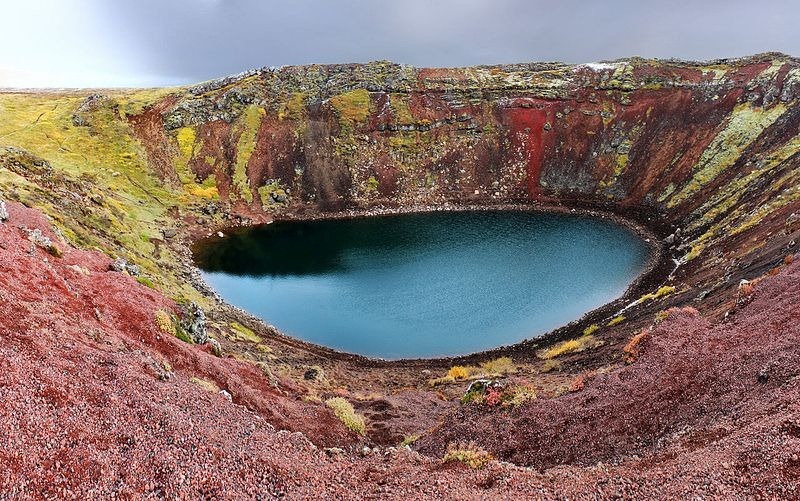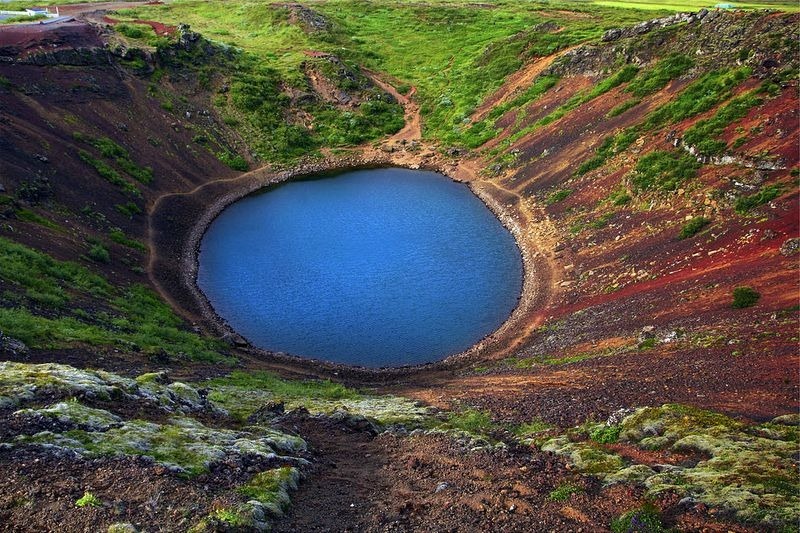The Kerio Crater Lake (sometimes spelled Kerid) is located in the Grímsnes area in south Iceland, and is one of the most photogenic volcanic crater in existence. It’s a regular stop for tourists along the Golden Circle sightseeing route and one of the most-photographed features in this amazing landscape.
The crater was formed by a volcanic eruption around 3,000 years ago and is one of several volcanic craters in the area, known as Iceland's Western Volcanic Zone, which includes the Reykjanes peninsula and the Langjökull Glacier. But Kerio Crater is the most visually recognizable with the caldera still intact, because it is only half the age of most of the surrounding volcanic features.

Panoramic photo of Kerio Crater. Photo credit
The caldera is approximately 55 meters deep, 170 meters wide, and 270 meters across. Like other volcanic rocks in the area, the rocks of the caldera is hued bright red caused by iron in the basaltic lava that has been oxidized by the groundwater. While most of the crater is steep-walled with little vegetation, one wall is sloped more gently and blanketed with a deep moss, and can be descended fairly easily. At the bottom is a pool of blue water that lies at the about same level as the ground water table.

Sources: Wikipedia / Lake Lubbers / Earth Story





















Comments
Post a Comment